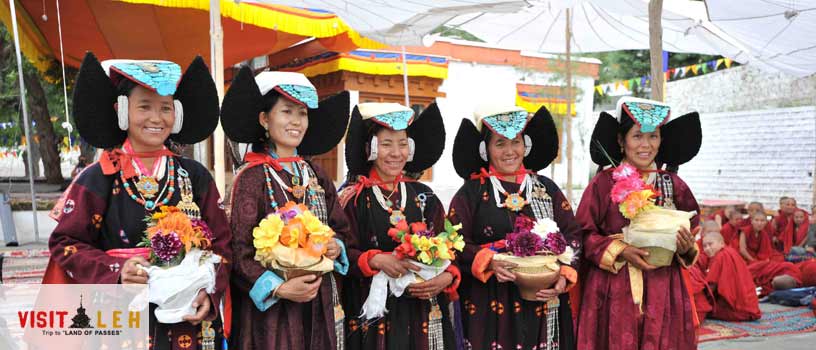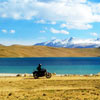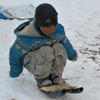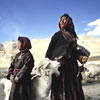
The Buddhist influence on Ladakh culture started as early as the 7th century. And now, this faith has gained dominance in this entire region. All over Ladakh, you will find ancient Buddhist rock engravings, even in the few areas dominated by Muslims.They have written somthing like Mantra on the stones.The stones and the prayer flag used as worship purpose And mantra is written in as “Om mane paddme hum “and by shorten, commemorative cairns, like stone pepper pots.One of the major highlights of the culture of Leh Ladakh are the monasteries that you will find in almost every village.Songs and poems for every occasion, as well as local versions of the Kesar Saga (the Tibetan national epic) also form a part of Ladakh culture.
Socio-religious festivals, including the festivals held in the monasteries, provide the excuse for gatherings.
Archery is an ancestral sport of Ladakh, which is part of the culture. In Leh and its surrounding villages, archery festivals are held during the summer months, with a lot of fun and fanfare. They are competitive events, to which all the surrounding villages send their teams.
The sport itself is conducted with strict etiquette, to the accompaniment of the music of surna and daman (oboe and drum). As important as the sport itself are the interludes of dancing and other entertainment. Chang, the local barley beer, flows freely, but there is rarely any rowdiness. The crowds attend in their Sunday best, the men invariably in traditional dress and the women wearing their brightest brocade mantles and their heaviest jewellery. Archery may be the pretext for the gathering, but partying is the thing. In Kargil area, on the other hand, the archery competitions are more serious and bereft of the dancing and music, and these are held in early spring, at the time of the thawing of the winter snow and frost.
Polo, the other traditional sport of Ladakh is indigenous to the western Himalayas, especially to Baltistan and Gilgit. It was probably introduced into Ladakh in the mid-17th century by King Singge Namgyal, whose mother was a Balti princess. The game played here differs in many respects from the international game, which is adapted from what British travellers saw in the western Himalayas and Manipur in the 19th century. Each team consists of six players, and the game lasts for an hour with a ten-minute break. Altitude notwithstanding, the hardy local ponies – the best of which come from Zanskar – scarcely seem to suffer, though play can be fast and furious. Each goal is greeted by a burst of music from surna and daman, and the players often show extraordinary skill. Unlike the international game, polo in Ladakh is not exclusively for the rich.
Traditionally, almost every major village had its polo-ground, and even today it is played with verve in many places besides Leh, especially in Dras and Chushot near Leh. In Leh town itself, it has been partly institutionalised with regular tournaments and occasional exhibition matches being played on the polo-ground. The local crowd takes a keen interest, especially in those matches in which a civilian team takes on that of the army. Altogether, polo adds a unique kind of colour and excitement to the summer in Leh.






